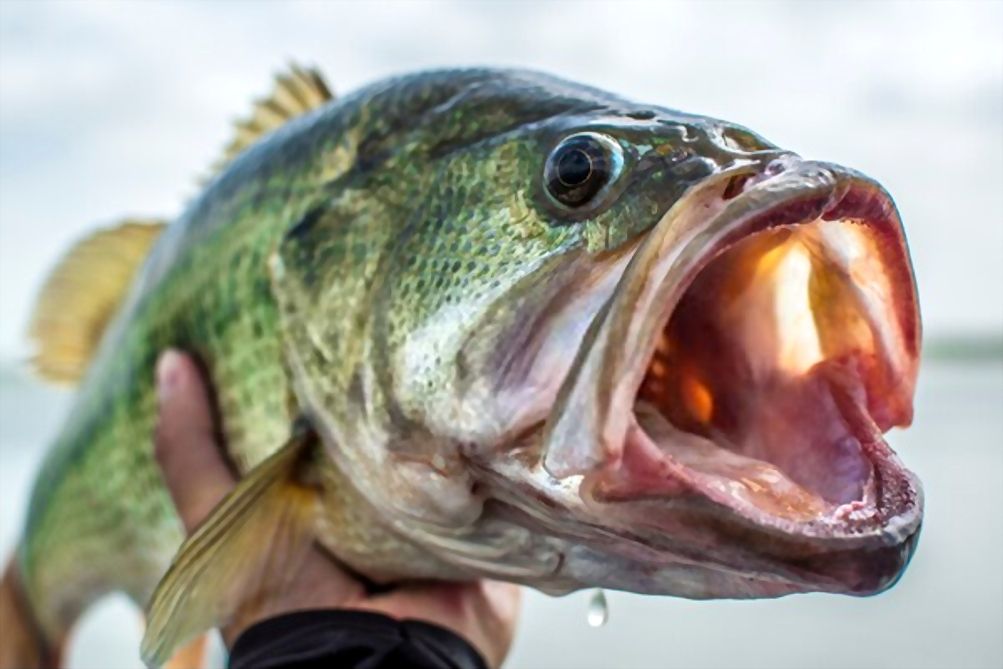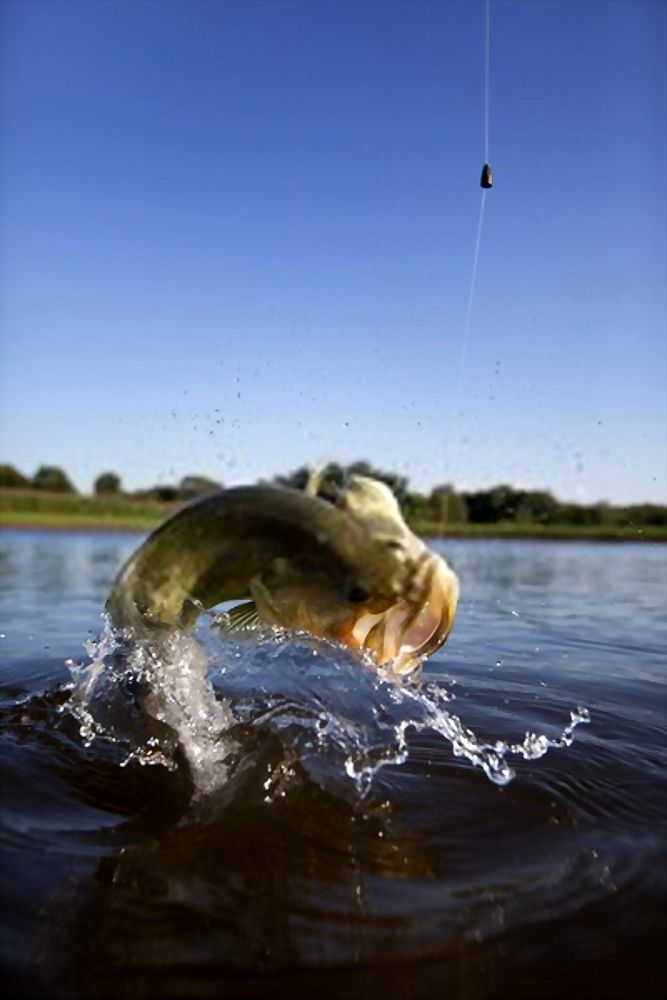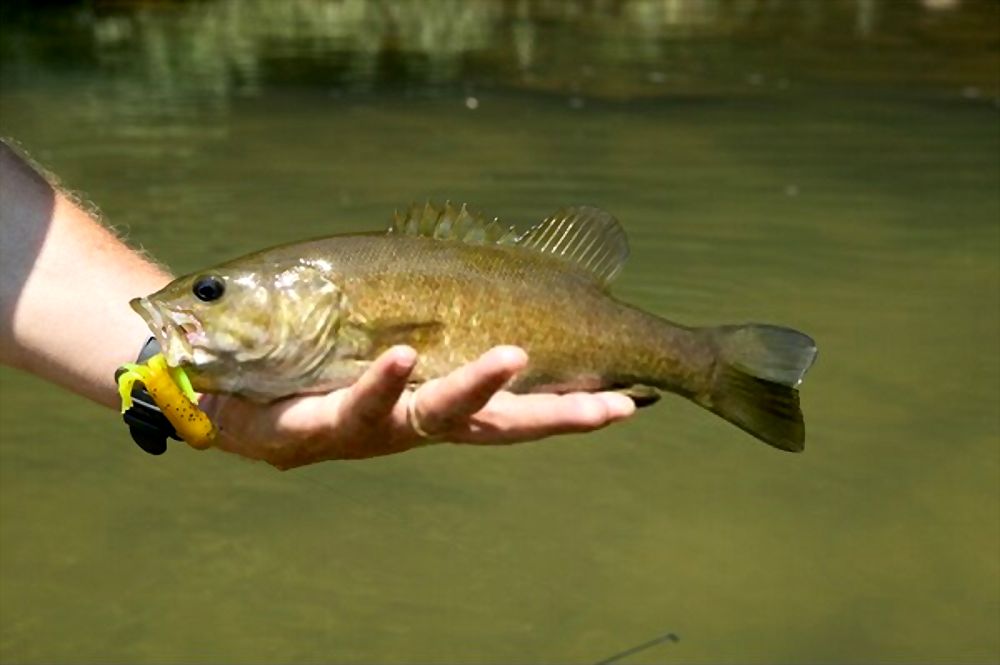So you are keen on bass fishing, huh?
Great!
You will be amazed to find out that it is not actually difficult to do bass fishing. In fact, as long as you have all the tools you need, the right fishing techniques, you can snag a good catch!
And this is what we’re here for – to tell you all about the best time of day to fish for bass, cool tips on fishing for spawning bass, and other insider tips every angler should know about bass fishing.
Let’s get to it!

When is the Best Time of Day to Fish for Bass?
This is what every avid bass angler wants to find out.
Is there really such a thing? The “best time” to fish for bass?
Before we answer that question, let’s explore the average bass anatomy.
As with all visual predators, the hunting ability of a bass depends on its environment. Or should we say, “photic” environment.
No animal out there is ever the master of the vast light intensity.
What this means is that animals are subject to what their eyes can see and the amount of light their eyes receive.
Every species of fish operates in varied conditions based on the established range of light intensity. Some can perform better in catching its prey in pitch black while others at a blinding light condition. And yes, there are those who are in-between.
As for bass, they straddle that line without excelling in either of the two extremes. They are better at playing the middle ground, which means they are good during dusk and dawn.

If you take a look at the eye of bass, you can see that its round lens is so large that it sticks out through the pupil. The protrusion is what makes it possible for the bass to have a wider range of views.
But it is not always all for the better…
This unique feature prevents their pupils from closing and opening. So they are predisposed to having their pupils wide open and stuck that way even if the ambient light is intense for them.
The result?
They take whatever intensity of light their eyes receive since they have zero control over their pupils. And yes, there are no eyelids to help block the light, too.
While it may seem unthinkably difficult for a human to endure this situation, it is not all that bad for a bass. Keep in mind that water absorbs light, so it can tone down the brightness even at midday.
For this same reason, there is no need for pupils to contract because of the water’s capability to regulate the light’s intensity.
The secret is all in the make-up of this fish’s eye. There are special pigment cells containing melanin, or that dark substance in the human skin allowing for it to tan.
When we talk about melanin in the eyes, though, it may seem a bit complex to fathom. But the gist of it is this – the melanin in the eyes help alter their performance when it comes to the changing light conditions.
Bass has two kinds of vision – photopic at daytime and scotopic at night or low-light situations. To put it simply, a bass sees different things at night and at day. It is just significantly different depending on the light conditions.
This is why bass has a better daytime vision in terms of color identification and depth perception. But once it gets dimmer, their eyes absorb more light to enhance their vision – something that their prey may not be able to do.
And here is the bottom line: Bass fishing is highly recommended during dusk and dawn since this fish species use both types of vision. This is just how they are anatomically designed.
Time of the Year to Fish for Bass – Is There Such a Thing?

The question largely depends on whether you want to catch a larger bass or not.
For instance, you need to possess some understanding of the spawning behavior or bass (which we will explain more in detail in a minute).
But for now, let us determine the right time of the day for bass fishing. This will help you become more productive and achieve success in angling.
Early Morning or Dawn
Any pro angler would recommend that you do bass fishing in the early morning or at dawn. This is the most ideal time of the day for greater success.
When it comes to the perfect bait to use during the wee hours in the morning, we recommend a shiner or a minnow. Baitfish activity spikes around sunrise, as long as it is still relatively low-light.
Artificial lures may be okay, and you can use topwater plugs or poppers around vegetation or shoreline.
Late Afternoon
As the sun begins to set, bass will make use of low light conditions to continue feeding.
The late afternoon is another prime condition to use topwater lures for bass fishing, just like in the early morning.
If you happen to go bass fishing in the summer months, this is the condition you will face. But you may have to try out a few fishing techniques including retrieve speeds to determine if your target is more keen on the slow or fast retrieve.
Night
Yes, bass is highly active at night, and so you should be ready for action!
These fish species feed heavily during nighttime, and this is why you need to be on guard and ready to lure them in.
But more than that, the night is an excellent time to go bass fishing because there are not so many anglers and without any commotion on the waters.
Summer nights are even better for bass fishing because of the cooler temperatures of the water during this time combined with the low light. These are great conditions for feeding before sunlight and heat return.
Here are more pro angling tips on the time of the day for bass fishing that you might want to check out.
Spawning Bass Fishing Tips and Angler Guide
Earlier, we mentioned bass spawning. So what is it all about and why does it matter?
In the southern parts of the United States, Largemouth bass spawn in the late winter. It works the opposite way in the north, though.
The main factor that affects this spawning activity is the temperature of the water. Once the water temps go up to 60 degrees, it is feeding time for bass while they move on to shallower water for nesting.
Now, it is important to note that there are two periods to think about spawning – the pre-spawn and actual spawning phase. There are some states, however, where the season for bass fishing is already over.
Spawning fish carry eggs, and it is important that these eggs are well-taken care of. This is why it is primary that you check in with your state regulations on freshwater fishing before you head out to fish.
Another thing worth noting is the post-spawning phase. After recovering from spawning, it will take a female bass a few weeks to build up her appetite. They are most likely to feed heavily once again after a few more weeks.
Anglers who are interested in bass fishing should be aware of these facts about spawning patterns to have a better chance of bringing home a great catch.
Should You Fish While Bass Fish are Spawning?
This is without a doubt a controversial topic among many bass fishing enthusiasts.
For those who do not support this activity, they argue about the fact that it impacts the breeding cycle. In the future, there will be less fish, which does not help the ecosystem.
On the other hand, there are studies that claim there is no similar impact on the bass population from one region to another. For instance, a study concluded that the bass population in the North is affected by spawn fishing while it does not hold true in the South.
But there is one important thing to take note of in the case of bed fishing.
A bedding bass can be very tricky to catch, especially when it comes to larger bass females.
Moreover, smaller males tend to be more aggressive when performing their duties as guardians to their young. But it is difficult to catch the trophy fish.
This is why for those who prefer to do bed fishing, there are certain methods to take note of whether the water is clear for anglers to have a good view of the beds or not.
When the water is clear, it is worth checking out hard-bottomed coves. This spot should contain chunk rock and pea gravel in the bottom.
Once arriving at this spot, you can head over to your boat’s deck and be on the lookout for round nests. These are areas cleared off as a result of bass wiggling their tails. Then, you can look for either the shadow or the actual bass.
We recommend a fluorocarbon line for this purpose and cast it beyond the bass’ nest. This is what you should do when the fish has not swum towards the bait. Search for the sweet spot, which in this case is the area of the fish’s nest.
You will have to be patient with waiting for a bass to take action.
Some anglers also use a dark lizard as a bait, as this is a bit tough to see in the murky water. But if you are aiming to catch smallmouth bass, an underwater cover would work in holding the bedding fish.
Bed fishing can be a fun activity but it is challenging. With some practice, you will find it to be a rewarding angling activity. Continue working on your catch-and-release technique to refine your skill over time.

Additional Bass Fishing Tips
Now let us talk about bass fishing on the rocks.
You may not be able to monitor temperature changes or check on a calendar, but there are other ways to know the right time to go bass fishing in the summer.
For one, you can find more pleasure boaters on the local lake, which means the increase in traffic could mean it is time for bass fishing in this fine time of the year.
But when it comes to checking out the perfect spot to catch that bass, you may have to target skinny water on the riprap or the back part of the coves. In case you have no boat, or there are too many people on the ramp, fishing from the bank is another good way to go.
A rip-rap is a structure made of natural rock or concrete chunks stacked up on the shore. This prevents waves from causing damages or eroding banks. Thus, this helps maintain the depths of the channel.
You can mostly find a rip-rap near bridges or dams, and many pro anglers try not to miss these areas when they fish a tournament.
Why?
Because a rip-rap signals a steep bank that ends in current or deep water. And you know what that means… It’s a great spot for bass fishing!
Within this rip-rap is a place that’s teeming with baitfish and crawfish, as well as bass and other predators.
When it comes to riprap fishing, the best way to go is to use a crankbait. But sometimes bass holds deeper than where your crankbait can go, so you may need to use a ¾-ounce spinnerbait. This is perfect in the summertime, and you can also use metal and blue flake colors that match perfectly well the baitfish.
The most important thing is that you go to that sweet spot where it is the end of the riprap and the start of the normal bottom. It could be about 6 to 12 feet of water, and your bass should be there waiting for their meal. As long as you set your baits in these depths, you should be able to entice that bass to strike.
We hope we were able to help you with these tips, and if you have further questions, please feel free to post your comments. Until next time!